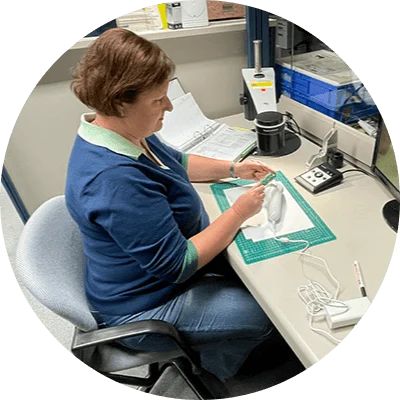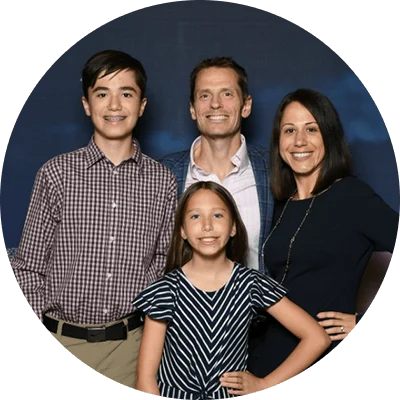12/13/2024
Celebrating the 100th Anniversary of P&G Analytics & Insights

A look at our century of impact, the principles of our approach and the hopes for the future of the analytics and insights industry.
This post is part of a series celebrating 100 years of P&G Analytics & Insights. Click the links below to read the other stories in this series.
- Years of P&G Analytics and Insights — Technology Transformation
- How P&G Reaches Consumers More Effectively and Efficiently with Data
- Meet the Analytic & Insights Masters: Experts Guiding P&G Innovation
- From Insight to Innovation: How Always Empowers Girls and Women
- A Century of Curiosity: P&G Analytics & Insights Discovering the Future
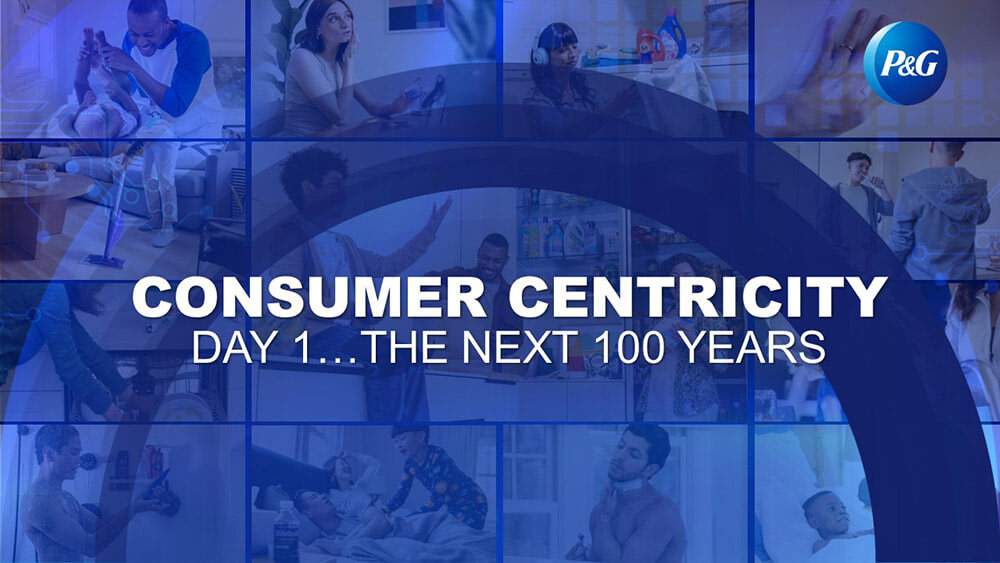
As we close our celebration of the 100th Anniversary of P&G Analytics & Insights, we’ll take one more look at our century of impact, the principles of our approach and the hopes for the future of the analytics and insights industry.
From the Beginning to Today
The start of market research at P&G was in 1924. A simple question ignited a spark of curiosity, empathy and consumer centricity across the world.
P&G executives were in the CEO’s office discussing Ivory soap. This included Paul Smelser, known as ‘Doc,’ for his PhD in Economics. Our chief executive officer at the time, Mr. William Cooper Procter, had invited Doc who was working on commodity pricing. At one point during the meeting, Doc speaks up and asks a question...
How many of our consumers use Ivory Soap for washing their hands and body versus washing their dishes and clothes? No one had a deep understanding of how Ivory soap was used. And Mr. Procter said, “Well, maybe you should go find out.” And that’s what Doc Smelser did.
- The short answer? Dishwashing — 12%. Face and Hands — 31%. Bathing — 40%.
- The long answer? He uncovered deeper consumer insights about who was using Ivory soap and how it was being used. He and the team used these insights to craft brand strategies for all the different usage occasions, what we call jobs today, of the Ivory brand.
That moment was the beginning of P&G’s deliberate focus on consumer understanding and the start of Analytics & Insights at P&G. Reaching the 100-year anniversary of consumer centricity at P&G is a time to reflect upon how far we’ve come and to ground ourselves for the future.
Our Key Learnings
The consumer is truly at the center of everything we do from strategy to execution in market. Reflecting back, three learnings have been key for P&G.
It starts with leadership intent. In the Ivory case it wasn’t just about the question that Doc Smelser asked and the insights he discovered, it was how Mr. Procter responded. He was curious about consumer behaviors and was committed to acting on them once they knew more.
Subsequent P&G CEOs have articulated and acted upon their beliefs on consumer centricity in different ways.
The second learning is the importance of focusing on key skills. The most important skill to be consumer-centric is curiosity…have a learning mindset.
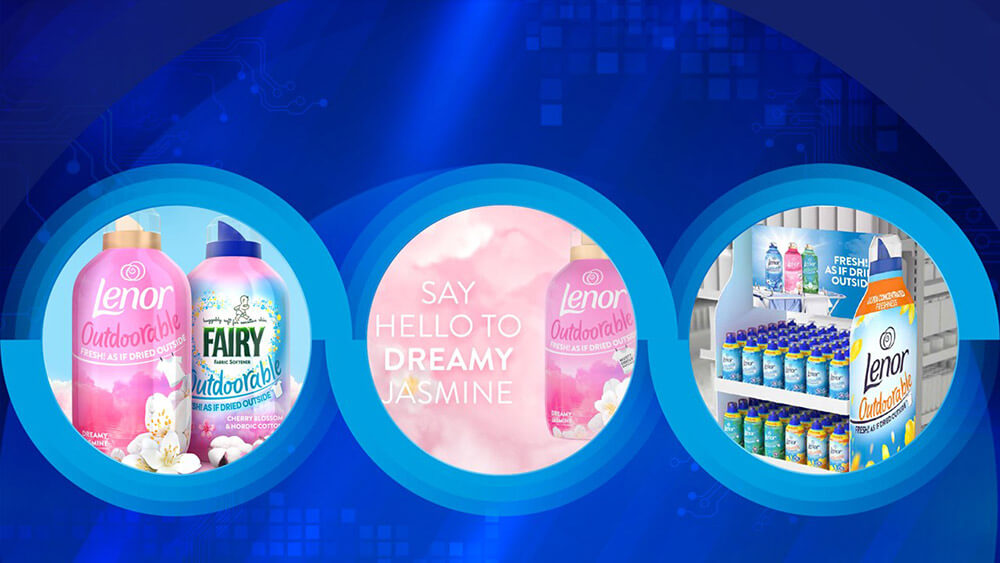
Our Lenor team’s curiosity took them to consumers in the UK to discover how to accelerate the category and the brand’s growth.
It’s common knowledge the UK has a lot of rain. That creates a problem and a tension for consumers as their gold standard of fresh laundry is when it's dried outdoors… ideally in the sun. However, consumers are often forced to line dry indoors resulting in musty odors on clothes and in the home.
Lenor created a new lineup called Outdoorable to bring outdoor line-dried freshness even when line-drying indoors. The freshness is brought to life across the product, package, communication, retail and delivering a worth it experience to consumers.
This underlying curiosity when paired with Human Sciences, Data Sciences and Technology skills creates the talent mix you need to build and activate consumer centricity.
The third learning is all about business acumen. The key to sustaining consumer centricity is making it a business strategy. At P&G our objective is not just to grow our brands and businesses, but to grow the market.
We do this by providing consumers superior brand experiences across product, package, communication, retail execution and consumer value. Consumers set the gold standard on superiority, and when we do our job right, we discover and articulate the consumer insight that acts as the “red thread” to integrate superiority across the consumers’ experience.
Success for us is not only defined by financial terms but also by consumer terms. Are more people using our brands? Are they using them on more occasions? And are they telling us the brand is “worth it” for their needs?
A great example of this is Swiffer Power Mop.
Swiffer has been in the market for many years, delivering growth with a preferred solution based on convenience. However, in-home visits with consumers led to the insight that the “mop and bucket” isn’t a dreaded chore, it’s the gold standard of cleaning for many consumers.
This insight defined the design objective for Swiffer Power Mop — a superior clean than mop and bucket, not just convenience. The consumer defined the product, package, communication, retail experience — and given the results, the innovation was worth it for the consumer.
We used AI Studios to test and iterate on advertising executions and created the Mop Smarter campaign, optimized across all ad formats and lengths.
The key is making consumer understanding and insights a core part of the business model and brand building from design to delivery.
Constructively Disrupting for the Future
Looking ahead, there is much opportunity in the analytics and insights industry to constructively disrupt itself and be even more integral to business growth. The combination of human expertise, augmented with AI, can be a good driver of business growth via consumer centricity and data-driven business decisions.
Many technologies can be applied to the analytics and insights field, including things like sensors, image recognition and video analytics. Yet, the potential of generative AI goes beyond anything we’ve yet experienced.
Gen AI not just as a standalone app, but powerfully built into every job that analytics and insights professionals are trying to do. It’s distilling and summarizing a qualitative interview as it is being recorded. When a concept is being written, it’s augmenting it with historical learnings to make it better… and the list goes on.
There is a watch out, and that is the quality and completeness of “data” sets. That’s where the concept of Data Labels may help. Borrowing from nutrition labels, the data label can show what data represents, how complete it is and where it came from.
The early results of AI are great, and the potential is even greater, with a focus on augmenting human expertise in analytics and insights. Humans understand and leverage the marketplace context, the brand strategies, and therefore they connect the dots between insights and business actions. So, it’s more about augmented intelligence.
We are at an opportune moment to transform Analytics & Insights, and we will be able to do that if we keep an omnipresent, consumer-focused growth mindset that drives us to experiment, innovate, and create.
So, what does this mean for the next 100 years? Without hesitation, the brands and companies that will succeed will be the consumer-centric ones. The how — and the skills for achieving that — will be disrupted and transformed many times over in ways that we can’t imagine.
We’re proud to have grown our industry together with our peers and our partners for the last 100 years. Today is Day 1 of the next century as we continue our journey and raise the bar on consumer centricity to drive growth and better serve our consumers.
It’s the 1930s, and there’s a knock at the front door. A friendly woman is asking questions about the household products you use every day, how you use them, what you like and don’t like about them and why.
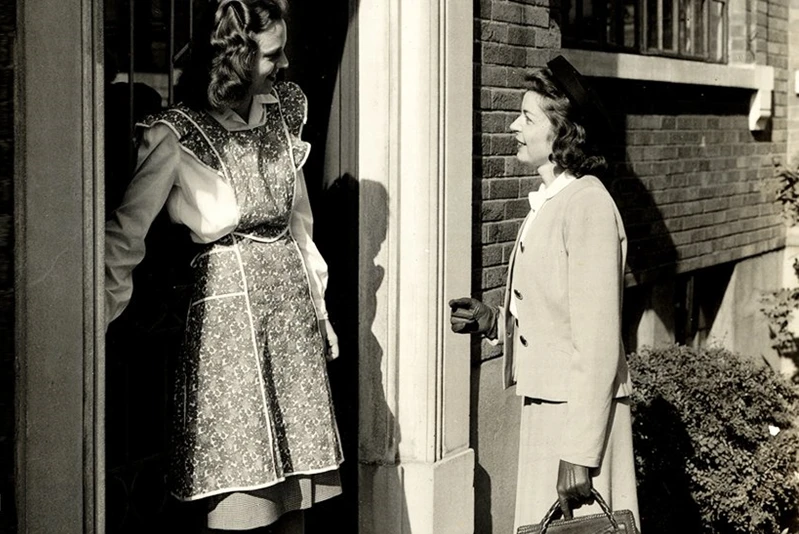
This door-to-door research was the first way P&G Analytics & Insights collected data about consumer behavior. It was groundbreaking at the time, but technology has made giant leaps forward since P&G started doing market research in 1924. Today, technologies such as smart home devices, virtual reality and artificial intelligence (AI) are changing the game on our ability to understand what consumers need and want, and to anticipate what’s next.
That early work uncovered a fundamental truth that has directed P&G’s business for the past 100 years — the success of any P&G brand is directly related to the Company’s proximity to the consumer. We are focused on driving business and market growth by serving consumers better than anyone with superior consumer experiences. Technology is the enabler.
Keeping Consumers at the Center

By starting with the consumer and a deep understanding of their needs and behaviors, P&G seeks to clearly understand the human problem to solve. Technology enables this by allowing us to be where consumers are, to observe human behavior, collect and analyze data and anticipate what’s next.

“Consumers’ daily lives and their needs are constantly changing, and we want to make sure we have the right solutions for their needs. Technology helps us better understand consumer behaviors, quickly uncover emerging trends and understand how to deliver superior experiences across our brands,” said Michael Lancor, Vice President of Analytics & Insights at P&G.
Evolution of Technology
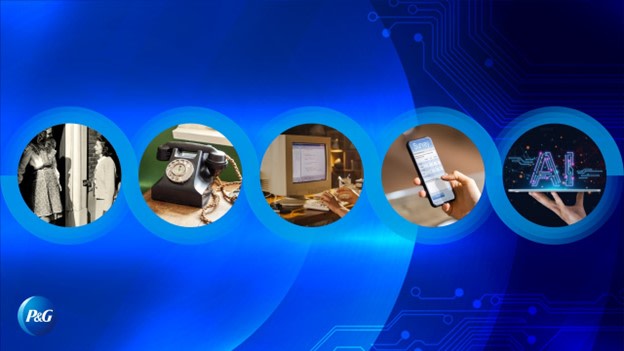
P&G continually reinvents how we work to stay ahead of an ever-changing landscape.
It began with the field investigators going door-to-door across the US. The method was effective, but it was a months-long process.
By the 1960s, the affordability of long-distance phone service allowed us to reach a broader set of consumers more efficiently. In the 1980s, the advent of computers streamlined data collection and analysis.
In the late 1990s, online surveys replaced traditional methods thanks to the internet, creating an even easier way to connect with millions of consumers. Computing power and software also improved the ability to capture, report and analyze data. The time to conduct a study became weeks instead of months.
Then smartphones and the widespread use of social media created a revolution, improving data collection time to within a day instead of weeks. With social media, consumers were generating their own data.
How We Work Today and What’s Possible
“From discovering new opportunities and trends, understanding habits and practices and emerging needs and ensuring we have superior brands and products, technology such as social listening, smart home devices and artificial intelligence helps us do this better and faster,” said Lancor.
One example of this in Baby Care is a product innovation called Ninjamas. By leveraging consumer-generated data from consenting parents, P&G looked at particular audiences and their interests on social media and was able to identify a population who was not using the right products. Children who were too old for diapers, but still experienced bedwetting, needed a product that gave them the confidence to sleep through the night without leaks and that felt like real underwear. P&G used these insights to refine its approach based on data and better serve this population.
One of the challenges in understanding consumer habits and practices is that consumers often have a hard time recalling their past behavior. P&G’s Connected Home technology puts smart sensors in the homes of consenting consumers to better observe consumer practices in context versus asking about habits that many have a hard time recalling.
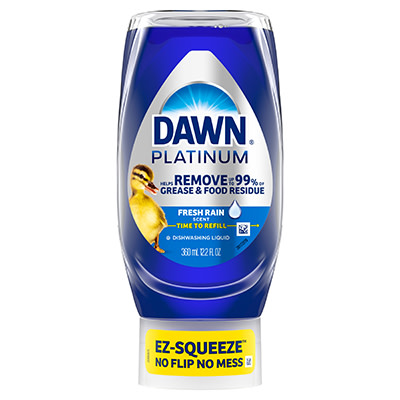
In hand dishwashing, Dawn discovered that consumers were unhappy with the bottles used across the industry as they would get messy with caked-on soap, weren’t easy to dispense and it was difficult to get all the soap out of the bottle. This led to the Dawn EZ Squeeze bottle, which stays clean, is easy to dispense and enables consumers to easily use every last drop of soap.
P&G Brand Builders are focused on delivering superior consumer experiences across our brands. AI helps us do this more effectively. For example, with AI, P&G can test the effectiveness of a new advertising campaign and get results in minutes, rather than weeks. This not only improves productivity but also reduces cost, significantly impacting what’s possible for the business.
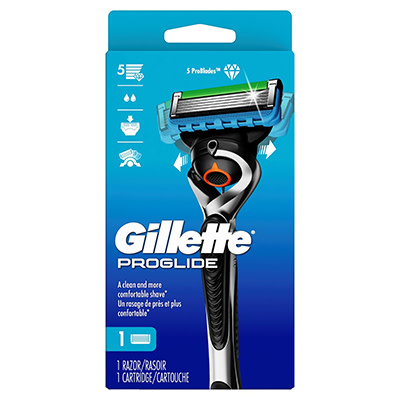
P&G’s U.S. Grooming team was focused on how to best communicate the benefits of shaving with a great razor. They used AI to test and adapt new messaging that communicated the advantages of using a razor that can “get virtually every hair in just one stroke for a shave you barely feel.” Gillette saw strong growth behind its ProGlide line because of this approach.
What’s Next
Over the past hundred years, P&G has embraced changing technology to make our work faster, easier and better. However, our goal remains the same — to deeply understand the world’s consumers, their needs and problems to solve. This ensures P&G delivers products that improve people’s lives, while creating value for shareholders and driving market growth.
“We're really looking to be led by the consumer and to leverage the technology to help us get there better and faster,” said Lancor.
6/13/2024
Delivering Breakthrough Results with Data: How P&G Is Reaching Consumers More Effectively and Efficiently

The way consumers engage with brands today is dramatically different than just 10 years ago. And P&G’s brands are constructively disrupting to continue delivering a superior experience.
Traditional television is facing increased competition as consumers seek experiences on digital and social channels. Shoppers are turning to e-commerce for more convenient and seamless experiences. And that has brands engaging with consumers in new and innovative ways. P&G is leveraging data, analytics, and technology to better understand consumer media habits, shoppers’ journeys and product usage experiences. With this, P&G can raise the bar on more superior brand communication with channels and messages that are ever-relevant to consumers and impactful for business growth. That framework is known inside P&G as REE — Reach, Effectiveness and Efficiency.
Turning the Tide: Reaching Consumers Where They Are
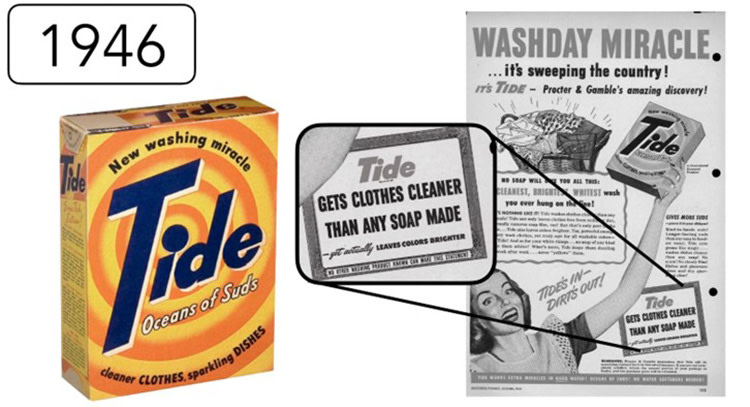
In 1946, Tide revolutionized Fabric Care, launching the first heavy-duty detergent with its promise of “oceans of suds” and cleaner, brighter clothes. Today, the brand continues to lead in the category but has been on a journey to better reach its audience with more effective and efficient media.
In 2015, to understand how well they were reaching consumers, the North America Fabric Care team asked consumers to send in pictures of the Tide ads they saw. It was a wake-up call when they got no response.
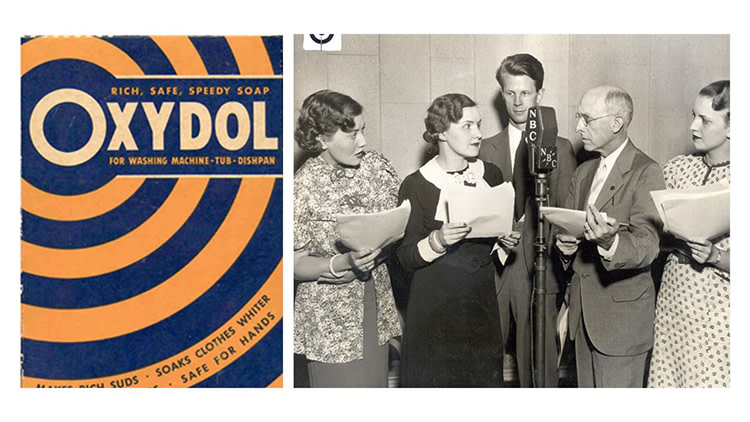
This wasn’t the first time P&G elicited consumer feedback in this way. In fact, P&G first measured media reach with a similar tactic.
P&G was a pioneer of radio soap operas in the early 1900s. In 1933, the popularity of a serial called Ma Perkins sparked a question — how many people were listening? P&G offered a packet of flower seeds to Ma Perkins listeners who sent in an Oxydol laundry soap box top and 10 cents. Over a million listeners responded, and P&G had its first-ever media reach measurement.
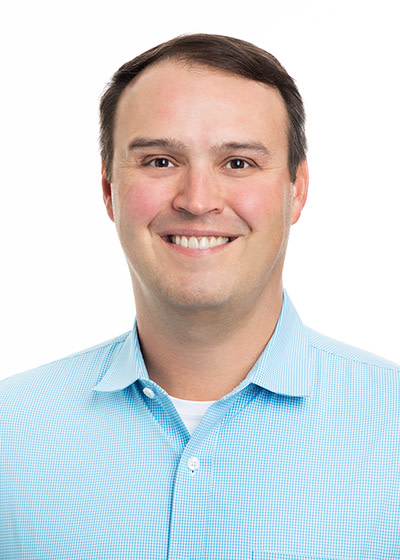
The curiosity of the North America Fabric Care team ignited a new era for P&G. “That work started the research of in-housing media within the Analytics & Insights function,” said Jason Finck, Vice President, North America Fabric Care Media. Tide was one of the first P&G brands to bring media planning, digital buying and optimization in-house. This has allowed Tide to adopt a test-and-learn mindset, refining their media approach with greater flexibility, speed and productivity.
Going Digital: Helping Shoppers Make Better Decisions
Retailer media is another opportunity to accelerate brand and market growth by engaging shoppers closer to the point of purchase through mass reach with precision. P&G’s Fabric Care and Home Care teams are using algorithms and programmatic media to automate media buying tasks and analyze large data sets. This allows teams to optimize ads in real-time, to target the right size products with the right placements on retailer sites to create superior consumer experiences. For example, organic search results often return smaller size products, but consumer insights reveal online shoppers are looking for bigger sizes. Serving large size products in paid ads gives shoppers the right information to make the best decision.
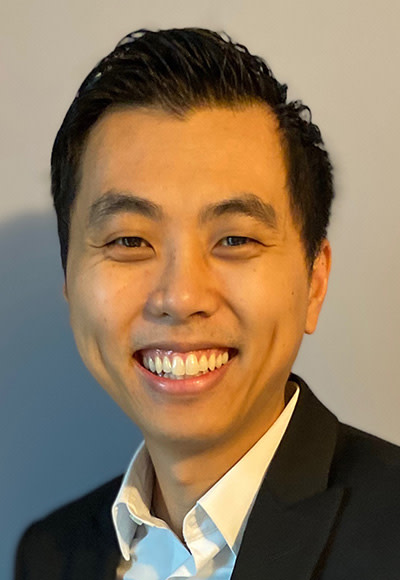
“What worked in media has given us a good foundation of the strategies that seem to work to drive overall sales and share. We're trying to put that into different capabilities today to grow the digital commerce business,” said Dean Ho, North America Home Care Analytics & Insights Leader.
Let’s Get Social: Innovating Strategies for More Effective Brand Communication
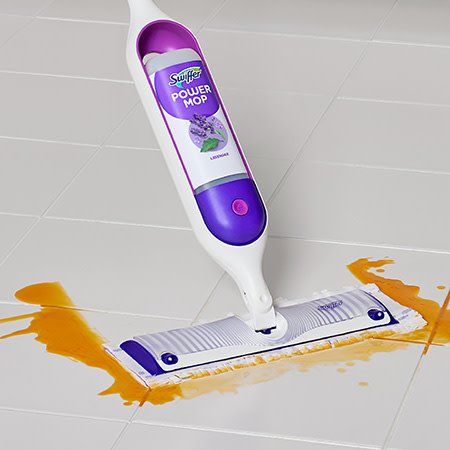
In Home Care, P&G piloted a recent product launch using a social-first media and digital commerce strategy — Swiffer PowerMop. One of the insights behind this innovation was that while people loved P&G’s iconic brands like Swiffer, Dawn and Cascade, less than half the U.S. population was aware that their sub-brands existed. To increase household reach and sales, P&G carved out a new path to purchase, based on where the consumer was — social platforms.
P&G’s advertising approach for Swiffer PowerMop prioritized digital strategies based on the most efficient drivers of digital commerce sales, such as availability, traffic, ratings, reviews and keyword relevance. Looking at consumer search and shopping behavior online, the team created automation rules to optimize spending for the greatest efficiency to drive sales.
They also utilized social platforms to promote Swiffer PowerMop at the different stages of the consumer's path to purchase. As part of this, P&G brought social influencers into the R&D lab to see Swiffer PowerMop. They started posting content on social before the product was available online. Before the first digital sale, “The Swiffer PowerMop search term on Amazon was higher than any other search term in our entire Home Care portfolio,” said Ho. Once the product was live, it became the highest digitally-selling item in their portfolio.
“I really think that the next frontier is around social commerce. That’s where people are discovering new products. That’s where people are then buying new products straight off that platform versus anything they see as an ad on TV or an ad on streaming,” said Ho.
Looking back, the P&G Analytics and Insights teams’ focus and passion for understanding the consumer and providing superior brand experiences hasn’t changed in 100 years. What has changed is the how — innovating in the use of data, technology, analytics and insights to be even more effective and efficient.
5/23/2024
Meet the Analytic & Insights Masters: Experts Guiding P&G Innovation
P&G celebrates A&I expertise, knowledge, and specialty skills
This post is part of a series celebrating 100 years of P&G Analytics & Insights. Click the link below to read our first two stories.
For 100 years, P&G has relied on meaningful insights to develop innovations that address people’s unmet needs through superior consumer experiences. This is possible thanks to the thousands of talented Analytics and Insights (A&I) professionals around the world whose deep consumer understanding mastery combined with data and digital technology expertise help us raise the bar on the experiences we deliver – informing superior product design, packaging, brand communication, retail, and value.
P&G values all talent and sees the success of the Company and employees as inseparable.
If you leave us our money, our buildings and our brands, but take away our people, the Company will fail. But if you take away our money, our buildings and our brands, but leave us all our people, we can rebuild the whole thing in a decade.
We recognize and reward individuals who have demonstrated mastery in a core skill area, applying that skill to drive innovation and contribute to business growth. Recently, P&G Analytics & Insights expanded its mastery recognition programs to celebrate A&I talent with high levels of expertise who have used their skills to deliver exceptional value by uncovering jobs to be done and solving business challenges. Currently, eight A&I leaders have received the designation of A&I Master. Read on to learn more about these talented individuals.
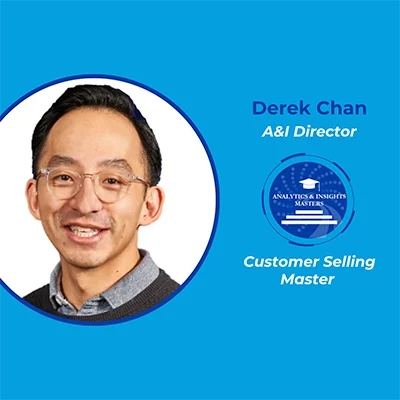
Derek Chan — Director, Analytics & Insights, Canada Market Operations
Derek has spent 15 years at P&G as a business analytics, technology, and retail media expert. His work is all about action and outcomes. “Insights are just insights until actioned. Insights hold true value when they are used to facilitate meaningful change and outcomes,” he says. Early in his career, through collaboration with the Canadian IT Innovation team, Derek helped P&G gain real-time insights on in-store display placement to ensure on-time in-store communication and product availability. When Shoppers scanned a QR code for rewards, P&G gained knowledge to better work with retailers to verify and ensure excellent on-time and quality execution of displays. This led to an 8% increase in sales and is just one reason why he is a Customer Selling Master and continues to be a leader, delivering impact within the P&G Canada A&I organization today.
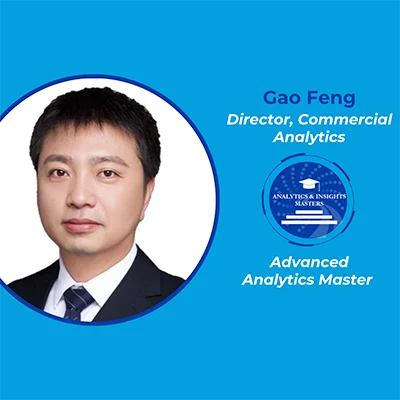
Gao Feng — Director, Commercial Analytics, Corporate Function Greater China
Gao has embraced innovative technology and solutions to find answers to new questions. Like how many people are we reaching in digital media across devices? A testament to his expertise, Gao built a platform to help P&G in China to answer this question. This was a breakthrough as we want to reach as close to 100% of consumers given our portfolio of daily-use household and personal care products and we want to manage frequency as people only need to see our ads about 1-2 times a week to be top of mind. While this is one of many contributions from Gao, one important lesson he has learned in A&I is to step away from massive data when it appears confusing and imagine from the consumer's perspective. “Transitioning from cold data to vibrant individuals broadens our understanding,” he said. “This principle has been instrumental in gaining true consumer insights in my work.” That’s why he is an Advanced Analytics Master!
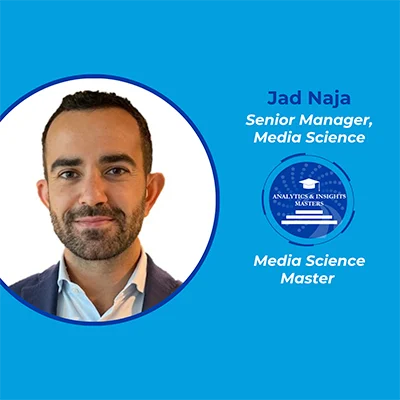
Jad Naja — Senior Manager, Media Science, Asia, Middle-East, Africa
Jad is known for effortlessly applying his mastery of digital, analytics, and insights to solve business problems with agility. For him, analytics isn’t just about managing big data and building tools. “It’s fundamentally about understanding the consumer deeply and leveraging those insights to drive strategic decisions that improve their experiences,” Jad said. How does he do this in his work? A great example is a digital media tool he pioneered that allows brands to analyze and make real-time decisions to optimize their media campaigns while they are still active — making them more effective for consumers. Jad has a mindset that in the rapidly changing consumer landscape, the ability to pivot based on real-time data is invaluable. It’s not just about current data, it’s also about forecasting and staying ahead of consumer needs. This is why Jad is a Media Science Master!
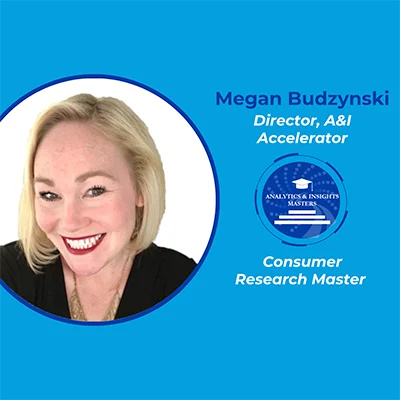
Megan Budzynski — Director, A&I Accelerator, Human & Behavioral Sciences, Global/North America
Megan firmly believes you should never stop learning. “How we do research today will be different than how we do research tomorrow,” she says. That’s why it’s so important to stay tapped into consumers’ mindsets, knowing them so well that you have empathy for them. P&G connects with millions of consumers every year around the world and Megan influences how we do research to learn from these consumers in the best possible ways and drive data quality. One way Megan fosters this is by ensuring consumer research data is diverse. “I’m particularly proud of the representation in our research, ensuring our research is reflective of the consumers we serve,” she says. This is foundational to help P&G brands serve all potential consumers and each unique consumer group with superior brand experiences to drive what matters – market growth. This is why Megan is a Consumer Research Master!
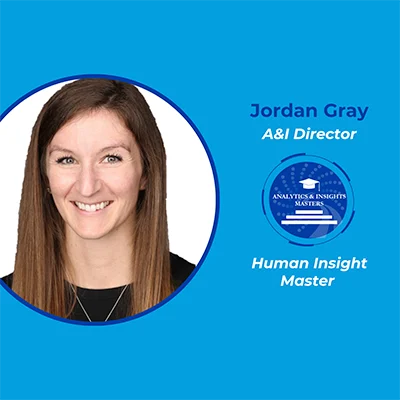
Jordan Gray — A&I Director, North America Fabric Care
Jordan knows true consumer understanding requires expanding capacity and taking time to learn and develop new capabilities. True to this belief, Jordan expanded her analytical skillset to translate big data sets into a granular level in what P&G calls Neighborhood Analytics. Working to understand urban consumers, it’s easy to have insightful conversations, but understanding consumers from one block to the next and the difference in purchase behavior, allowed Jordan to work with retailers to customize product assortment in urban stores based on what was most popular in each neighborhood. This underscores Jordan’s innate curiosity. “Learn about your consumers as people first, then as product buyers.” This applies to her fellow A&I coworkers as well. Jordan helped build the consumer research arm of the A&I team globally. “I got to listen to their values and struggles and with gratitude, realizing that even at two ends of the earth, we're all more similar than we are different.” That’s what makes Jordan a Human Insight Master!
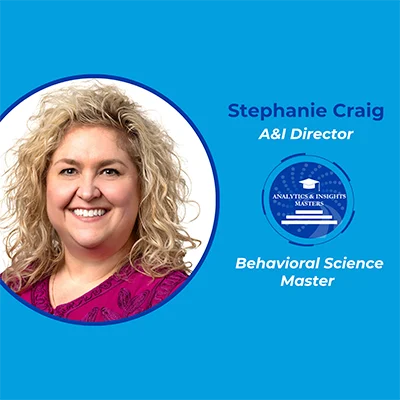
Stephanie Craig — A&I Director, Global Shopper Behavior, Corporate Function Sales
In a world where data is everywhere, Stephanie knows what makes the difference is understanding “the why” behind the data. Data is critical, the bricks in the foundation of our understanding, and deep insights about human behavior are the mortar that holds the foundation together. Without insights, all we have are piles of data. Stephanie focuses on business outcomes to raise the bar on P&G brands superior retail experiences. That means going to retail, seeing the shelves through a shopper lens in both physical and digital, and then working backward to design the category, brands, portfolio, and communication strategy in a way that makes shopping easier. Leading P&G’s proprietary application of Behavioral Science to retail strategy to make shopping easier is the most exciting project Stephanie has ever worked on. “It turns traditional thinking on its head and enables everyone who learns to see things in a new and exciting way to delight consumers and grow sales,” she says. All of this and more is what makes Stephanie a Behavioral Science Master!
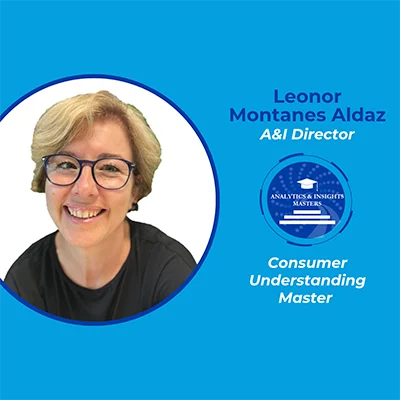
Leonor Montanes Aldaz — A&I Director, Fem Care Dailies, Europe Feminine Care
Leonor is a master at understanding what consumers want and knows the consumer is really boss. The best and most successful projects she has worked on were where she "shows consumers the cards" right from the start and involves them in product creation, communication, packaging, and understanding a value that is “worth it”. Her favorite project was the launch of Always Discreet. She saw it as an amazing human and professional experience where Always is improving the lives of women suffering from incontinence with a superior product innovation. Leonor has a deep level of empathy that makes her an amazing consumer mind and soul reader. She discovers “insight nuggets” by connecting dots from qualitatives with quantitative data sets as she brings to life the consumer stories. She has an amazing ability to communicate these stories in a way that takes business teams from understanding to empathy to actions that create business value. This is why Leonor is a Consumer Understanding Master!
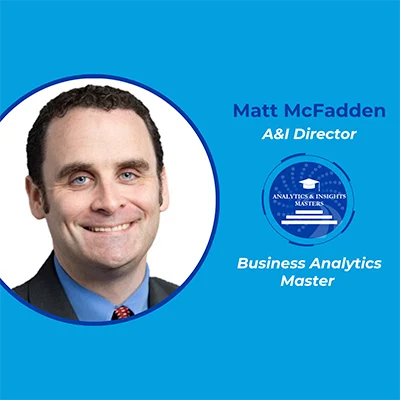
Matt McFadden — A&I Director, Senior Data Analyst/Data Science Global Oral Care
Matt sees himself as a data wrangler, leveraging his analytic, data science, and automation expertise to enable business agility and decision-making, providing real-time insights on consumption and channel trends, category growth, and market development. He played a key role in developing a patented solution that provided sales and marketing guidance at the individual store level. His vision and drive were instrumental in conceptualizing its potential and facilitating its activation, integrating it into P&G's decision-making processes; it was so successful in transforming go-to-market strategy that it was highlighted in a Harvard Business Review case study. What does Matt see as key to his becoming an A&I master? Mentorship. “In every assignment, there was a skill, knowledge, or experience gap and a period of learning to gain depth of understanding,” he said. “Through the support of a series of terrific A&I managers and mentors I grew in each role and believe I came out of them better equipped to support P&G.” Matt is always up for new challenges and opportunities to apply his first-hand experience in recognizing the opportunity to analyze new datasets to solve business challenges. This is why Matt is a Business Analytics Master!
This post is part of a series celebrating 100 years of P&G Analytics & Insights. Click the link below to read our first story.
Since 1984, P&G feminine care brand Always has used consumer insights to dispel myths surrounding menstruation and empower girls and women from their first period and beyond.
It starts with asking the right questions
“We start nearly every feminine care consumer research interview by asking women about their first period. We do this because all women remember it — it’s a rite of passage,” said Daniela Margescu, Vice President, Global Head of Analytics & Insights for Feminine Care at P&G.
Through these conversations, Always has found that a woman’s menstruation experience is profoundly shaped by her education, culture and support system.
There’s a stark difference between girls who have adequate puberty and period education from trusted sources before their first period and those who do not. For the latter, it can be quite a harrowing experience, surrounded by taboos, myths and even fear.
For the last 40 years, Always has been uncovering and trying to break deep-rooted taboos, providing accurate information about puberty and periods — and providing access to period products for those who don’t have it — through different initiatives and campaigns inspired by the insights discovered by our team.

Turning an insult into a rallying cry
One of the most iconic and universal insights discovered by our consumer research efforts showed that stereotypes in many parts of the world portrayed girls as weak, overly sensitive and less capable. The demeaning phrase “like a girl” was so ingrained and accepted, few even noticed the negative effect it had.
Ten years ago, Always launched their “Like A Girl” campaign to help change the narrative. Today, 76% of people feel “Like A Girl” is a positive expression, versus 19% before.

Busting myths and breaking taboos
By interviewing and spending time with young women, our team at Always has uncovered insights that have helped the brand tell powerful, authentic stories — and change the narrative around menstruation.
In India, consumer researchers for Always (known as Whisper), discovered that three out of 10 girls were unaware of menstruation at the time of their first period. Many are subject to outdated cultural restrictions during menstruation. They are told not to sleep in their bed, not to enter places of worship, and not to touch the family pickle jar — otherwise, the pickles will rot because women are unclean when on their period. These beliefs and behaviors inspired Whisper’s “Touch The Pickle” campaign, which encouraged girls to challenge outdated practices and live their lives to the fullest — even during their period. The campaign earned the Grand Prix in the Cannes Lions International Festival of Creativity Glass Lions category in 2015.
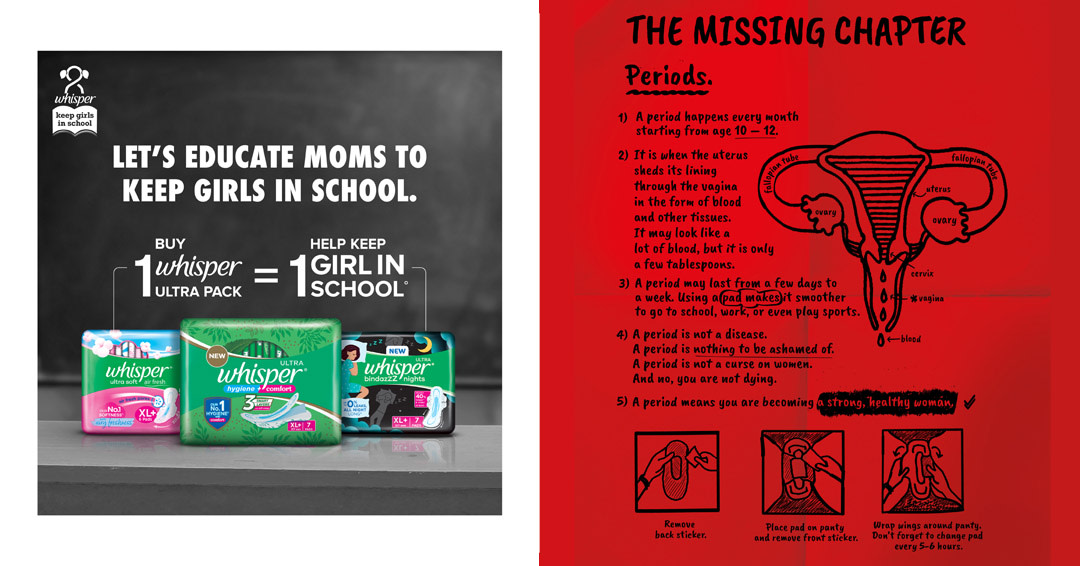
But the Always team didn’t stop there. They’ve continued to work to understand cultural norms in India, including periods are something that you do not talk about, to the point that most schools do not provide period education. This led to 1 out of 5 girls dropping out of school, as they are not prepared and don’t have adequate support.
Through their 2021 campaign, “The Missing Chapter,” Whisper broke a social taboo by sharing their findings and advocating for period education in schools. Whisper’s efforts in India are to prompt a change to a century-old education system and add the “Missing Chapter” on period education to the school curriculum. This earned another Grand Prix in the Sustainable Development Goals category at Cannes in 2022.

Period Poverty, the lack of access to good menstrual health, hygiene and period products, are unfortunately a universal truth that affects millions of girls and women around the world, virtually in every country, and not only in low-income nations, as many would have thought.
LEARN MORE ABOUT ALWAYS’ EFFORTS TO END PERIOD POVERTY
Research shows that one consequence of period poverty is that many girls miss school every month. When girls don’t have access to the products they need to effectively manage their period, not only do they not feel protected, but it also puts their confidence and education at risk. That’s why Always launched the #EndPeriodPoverty Program in 2018, generating awareness in more than 28 countries and donating more than 290 million period products globally since.
Setting our sights on the next 100 years
Throughout its 100-year history, Analytics & Insights at P&G have used the combination of human, data and technology to uncover consumer insights that drive innovation. This approach is not just a strategy for Always — it’s how we fulfill our pledge to champion girls and women at every stage of life. With deep consumer understanding, Always will continue to challenge taboos, innovate products and empower girls and women to live without limits.
For the last 100 years, P&G Analytics & Insights has been at the forefront of understanding consumers, driving innovation and discovering future opportunities to drive growth and enable superior consumer experiences.
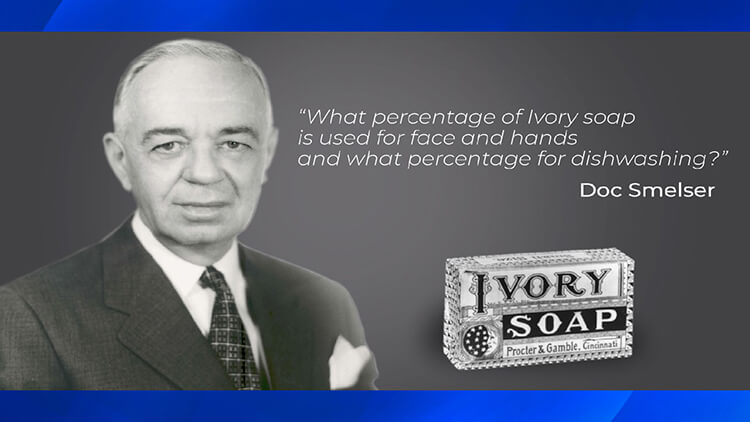
It all started with the insatiable curiosity of one P&G employee.
One question sparked a revolution in consumer understanding and led to the birth of the field of market research:
What percentage of women use Ivory Soap for face and hands versus dishwashing?
Keep in mind this was 1924. The man asking that question was “Doc” Smelser, a PhD working in the P&G Economic Research Department at the time. The interesting truth was that nobody knew the answer, and so William Cooper Procter, then CEO, suggested Smelser himself “go find out.” And he did.
Smelser conducted our first-ever research by knocking on doors — and he both asked and observed how women used Ivory. This led to P&G’s creation of a Market Research Department and development of market research skills. These professionals went door-to-door and sought to answer questions like, “Which fragrances should be put into Camay soap bars” or “Which colors looked best on the newest packaging.”
From then on, we’ve been on a relentless journey, focusing on consumers and using their insights to inform strategies, develop superior products and make a positive impact in small but meaningful ways on lives worldwide.

Consumer understanding has shaped P&G's strategies.
From product development to communications, insights have directly influenced the creation of products like Tide, which revolutionized how people wash their clothes.
As the world changed, P&G adapted its methodologies to connect with consumers on an even deeper level. From in-home visits to telephone calls, mailed surveys, and now digital platforms and AI Models, P&G has always sought innovative ways to bridge the gap between consumers and brands. By always moving closer to the people we serve, P&G has been able to gather invaluable insights and deliver propositions that meet their needs.
We are now reimagining the synergy between human, data and technology in homes, retail environments, and digital and physical spaces. And while we are innovating and embracing data and technology in new ways, we never lose sight that Data is Human.

We never lose sight that data is human.
Consumer data is the product of human behavior or insight. That may be a consumer viewing a digital ad delivered through a programmatic platform. It may be the purchase of a package of Pampers at their local supermarket, where the beep of the register and scan of the loyalty card generates a transaction. The data we use to analyze and plan our business comes from real people. From our consumers. The same people we aim to serve with our superior products every day. This is what sets P&G apart.
P&G Analytics & Insights has come a long way from its humble beginnings.
As we celebrate a century of success, we look forward to a future where Analytics & Insights continues to drive innovation for P&G and our brands in our mission to improve the lives of consumers worldwide today and tomorrow.
Together, the team will continue to be driven by an insatiable curiosity and a relentless pursuit of understanding consumers. This will unlock new frontiers and shape consumer understanding for the next 100 years and beyond.
Follow us throughout the year to hear stories from our heritage to today — stories from our brands, our innovations, and our people.


